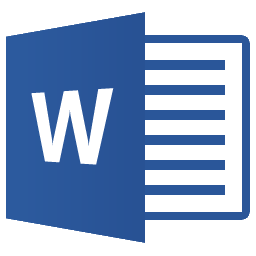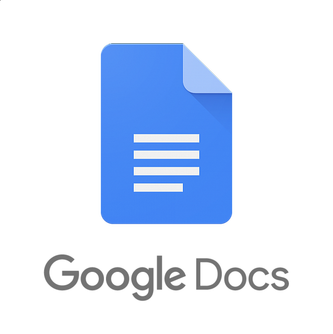What is “the cloud” anyway?
And how can it help you?
We know the “cloud” can seem complicated. And we talk to a lot of small business owners who say “they’re not great with technology.”
In this article, we’re going to show you the basics.
How the cloud works, why it’s important, and how it can cut many hours of effort and frustration from your life if you learn how to use it.
What is “The Cloud”? (An Example)
“The cloud” isn’t a giant hard drive in the sky.
The cloud is simply a network of computers (a.k.a. “servers) that can be accessed remotely through your computer’s internet connection.
An example will help:
Local Software: Microsoft Word

Think of the programs you’ve been running on computers for years.
Microsoft Word is a great example.
Word used to come exclusively in a box with a CD as part of Microsoft Office. You’d install the software from the CD to your computer’s hard drive. Literally, your computer copied files off the CD to the hard drive in your computer.
From then on, when you opened Word on your computer, it loaded and ran directly from your hard drive—no CD or internet connection required.
We sometimes call this “local” software, because it is stored “locally” on your hard drive.
Cloud Software: Google Docs

Google Docs is a competitor to Microsoft Word.
It’s a word processor that looks and feels a lot like Word, except it doesn’t live on your computer’s hard drive the way Word does.
Instead, Docs is installed on servers inside giant data facilities run by Google.
To access Docs, you go open an internet browser (Chrome, Firefox, Internet Explorer, Safari, etc.) and go to the Google docs website: docs.google.com.
From there, you log in with your Google account, then create and edit documents.
There is no CD to install—no program to be copied onto your hard drive.
The Docs program and and every document you create using it will live completely on Google’s servers or, “in the cloud.”
Note: For the purpose of this comparison, we have only considered the “local” version of Microsoft Word. It should be noted that Microsoft now has an online version of Microsoft Word, which is a cloud-based application that works a lot like Google Docs.
Examples of Cloud Software Programs
You’re probably using a few programs right now you didn’t realize were “cloud” software. To give you just a few examples:
- Gmail, Google Drive, Google Docs, Google Sheets, or Google Slides
- Yahoo Mail
- FastMail
- iCloud
- Dropbox
- Box
- OneDrive
- Evernote
- OneNote
- Salesforce
- Slack
- Asana
- Basecamp
Why Is the Cloud Important?
Cloud-based software provides a number of advantages for small businesses over locally-installed software:
1. Zero or Low Up-Front Capital Expenditure
Cloud software usually doesn’t require up-front capital expenditure or special equipment, a major advantage for most small businesses.
All the computers in your office have a web browser, for example. And programs like Chrome and Firefox are free to download and install.
The Chrome browser, in particular, has a huge store full of free and low-cost browser extensions. In fact, we have a growing library of extensions we’ve built ourselves. Using them can improve everything from your personal productivity to your internal communications.
2. Flexibility
Cloud software is easy to scale up or down based on your usage. Many cloud software providers sell business packages with bundled user licenses.
Adding a new user can be done in minutes, including setup. Just send the new user to the login page, and they’ll be on their way.
3. Access from Anywhere
Cloud services run either in a web browser or from apps on a phone or tablet.
This provides unprecedented access to your information—since you can access your data and files from anywhere.
4. Security
Lost laptops are a billion-dollar problem for modern businesses. With cloud software, you’re in control of who has access to your accounts and your data.
And, if needed, many services include an option to terminate access to your data remotely, including removing any saved data from those connected devices.
5. Automatic Software Upgrades
Cloud software is continually being updated and improved at no cost to the user. With most services, as long as your subscription is active, you’ll always have the most up-to-date software available.
6. Collaboration
Finally, there are things you can do with cloud software that you simply cannot do with traditional native software programs.
Two people can access and edit a Google Doc at the same time, for example. And if you add a note to your Evernote account on your phone, it will appear almost instantly if you log into Evernote from your computer.
No uploading, downloading, or version control required.
The Payoff: Cloud Software vs. Native Software
Any of the above reasons might be enough to justify a switch to a cloud software service.
I still remember the first time I saw two people editing a Google Doc at the same time. As a long-time power user of Microsoft Word, I was floored.
When I realized Docs automatically saved my documents as I typed and maintained a full revision history I could “roll back” anytime I wanted?
I was sold, and I’ve been a Google Docs user ever since.
Whatever your business needs, if you haven’t looked into “the cloud” to see what advantages it has for your business, you should.
When you do, make sure you check out our cloud backup and syncing services as well as our ever-expanding library of free and low-cost Chrome productivity extensions.
Both will help you be even more productive in the cloud.